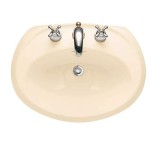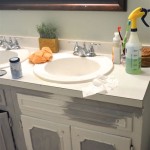How to Make a Framed Mirror for Your Bathroom
A framed mirror can add a touch of elegance and sophistication to any bathroom, and creating one yourself is a fun and rewarding project. This article will guide you through the process of building a custom-framed mirror, providing detailed steps and tips for achieving a polished and professional finish.
Choosing Your Materials
Before embarking on your framing adventure, it’s essential to select the right materials to ensure a sturdy and stylish outcome. The choice of materials will depend on your desired aesthetic and budget.
Mirror: The size and shape of your mirror will determine the overall dimensions of your frame. Consider the size of your bathroom and the space where the mirror will be hung.
Frame Material: Popular framing materials include wood, metal, and plastic. Wood offers a classic and versatile look, while metal provides a more modern and industrial aesthetic. Plastic is a budget-friendly option that comes in a variety of colors and finishes.
Framing Technique: The framing technique you choose will influence the overall look and complexity of your project. Common framing techniques include mitered corners, rabbet joints, and picture frame molding. Mitered corners create a classic and clean look, while rabbet joints offer a more rustic and decorative appeal. Picture frame molding provides a pre-made solution, making the project easier, but it may not be as customizable.
Hardware: You'll need appropriate hardware for hanging the mirror, such as D-rings, wire, or picture hanging hooks. Select hardware that is strong enough to support the weight of the mirror and frame.
Constructing the Frame
Once you have chosen your materials, it's time to start building the frame. Follow these steps for a successful frame construction:
1. Measure and Cut: Measure the dimensions of your mirror and add the desired width of your frame on all sides. Cut the frame pieces to size using tools such as a miter saw, table saw, or hand saw.
2. Join the Corners: Choose your desired framing technique and join the corners of the frame accordingly. For mitered corners, use a miter saw to cut the frame pieces at 45-degree angles and join them using wood glue and clamps. For rabbet joints, cut a groove into the frame pieces and fit them together.
3. Secure the Frame: Once the corners are joined, secure the frame using screws, nails, or glue. Ensure the frame is sturdy and well-supported.
4. Finish the Frame: Sand the frame to smooth out any imperfections and apply a sealant or primer if desired. Paint or stain the frame to achieve your desired color and finish.
Attaching the Mirror
The final step is to attach the mirror to the frame. Follow these steps for a secure and professional finish:
1. Prepare the Mirror: Clean the mirror thoroughly and ensure it is free of any dust or debris.
2. Attach the Mirror to the Frame: There are several methods for attaching the mirror to the frame. You can use mirror clips, glue adhesive, or specialized mirror mounting tape. If using mirror clips, attach them to the frame and then gently press the mirror into place. For glue adhesives, apply a bead of adhesive around the perimeter of the frame and carefully press the mirror into place.
3. Secure and Dry: Allow the glue or adhesive to dry completely before moving or handling the mirror. If using mirror clips, ensure they are firmly attached to the frame.
4. Add Hanging Hardware: Attach the D-rings, wire, or picture hanging hooks to the back of the frame. Ensure the hardware is securely installed to support the weight of the mirror.
Additional Tips
Here are some additional tips for creating a successful framed mirror:
1. Choose a Durable Finish: To protect your frame from moisture in the bathroom, choose a durable finish such as a polyurethane coating or a water-based paint.
2. Consider the Style: Think about the overall style of your bathroom when choosing the frame material, color, and design. A modern bathroom may benefit from a sleek and minimalist frame, while a traditional bathroom might look best with a more ornate frame.
3. Add Personal Touches: If you prefer a more personalized touch, consider incorporating decorative elements into your frame, such as decorative molding, beading, or even a unique design.
4. Seek Professional Advice: If you're unsure about any aspect of the framing process, don't hesitate to seek professional advice from a local framing shop. They can provide expert guidance and even offer framing services if you prefer.
Creating a framed mirror for your bathroom is a fun and rewarding project that can add a personal touch to your space. With planning, the right materials, and careful execution, you can create a stunning and unique piece that complements your bathroom decor.

Mirror Frame Diy How To Update A Basic Bathroom Our Faux Farmhouse

Diy Stick On Mirror Frame Sawdust Sisters

Diy Bathroom Mirror Frame Without Removing Clips Her Happy Home

How To Make A Diy Bathroom Mirror Frame Thediyplan

Diy Bathroom Mirror Frame With Molding The Happier Homemaker

Diy Wood Framed Bathroom Mirror Christina Maria Blog

How To Make An Easy Diy Bathroom Mirror Frame Momhomeguide Com
Diy Wood Frame Mirror Farmhouse Industrial Bathroom Joyfully Treasured

Bathroom Renovation Diy Mirror Makeover My Happy Simple Living

Iheart Organizing Diy Wood Framed Mirror
Related Posts







